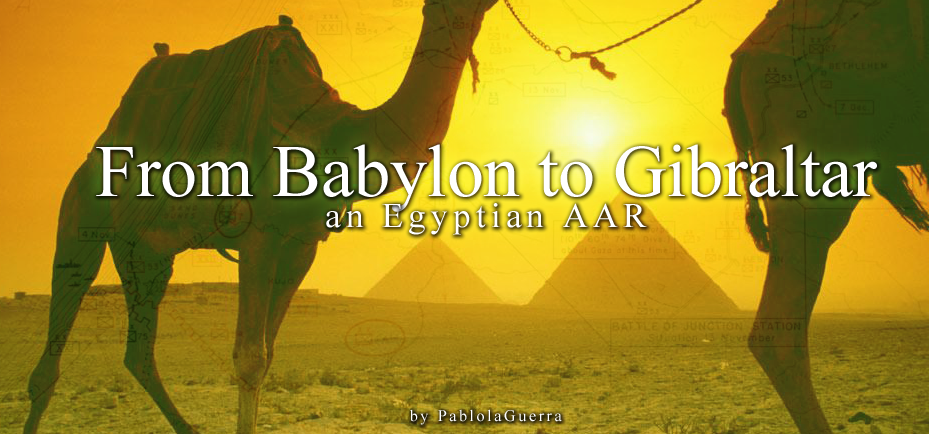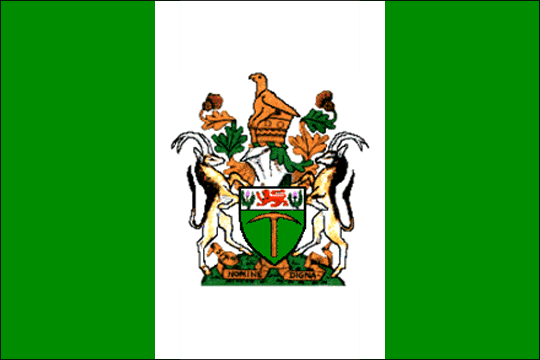The Soviet Federation of Tanganyika
In 1885 Germany controlled what is now Tanganyika as German East Africa (GEA). With the Protectorate under German rule it was quickly developed along the lines of financial gains. The major cash crop at the time, Sisal was planted across over a hundred thousand acres, along with two million coffee trees, two hundred thousand rubber trees and massive cotton plantations. Usambara Railway (or the Northern Railroad) began construction in 1888 from Tanga to Moshi, not being completed due internal turbulence until 1920. Along with many harbors that had been repair or improved, with Bagamoyo being the premier port of East Africa. The education that GEA offered to Africans was unparalleled at the time for
any country or colony in Africa. During 1904 the strong governor of the Protectorate, Count von Götzen died from disease. A year later the Maji-Maji rebellion begins and the new replacement, Count Peter Wilhelm the Second, is not ready to face the political quagmire that was to come about if he starved out the population to defeat the rebellion. In doing so he prolongs the war indefinitely. Until Kinjikitile 'Bokero' Ngwale's death, a strong figure in the Maji-Maji movement. With that the more developed revolution was hit hard, so they meet the Count at the negotiations table with one offer, give German East Africa full self-governance. This, with the blessing of the German Empire, was granted. In 1913 gold was prospected and, with an East African tax, mined by many white prospectors. After the defeat of the Central Powers (Paul Emil von Lettow-Vorbeck's great resistance didn't occur in East Africa due to the horrid rebellion but did happen with greater success in West Africa) the British attempted landing their armies on East Africa, but the people, who had fought for seven years to gain self-governance raised the East African Army and made a valiant stand at Dar-es-Salaam. With minimal German training and 'accidental' caches of German weapons and ammunition they held their own for weeks. Eventually the Brits landed at Pangani and turned to face the East Africans at the capital (Dar-es-Salaam). After a much harder battle than the Crown's commanders had expected the remainder of the East African Army retreated into the bush and turned to guerrilla warfare, taking many lessons from the great Lettow-Vorbeck. After salting millions of acres of cash crops and subsistence farming for almost two decades they finally accomplished their goal. On August 14th, 1934 the Crown granted full independence for the 'Republic of Tanganyika'. It's final constitution was written in early 1935 and renamed as the African State of Tanganyika. As the guerrilla group known as the East African Army came out of hiding to get the glory for the long fought war they were cut down by the populace. Their method of starvation had not only destroyed European profits but also the lives of more than a million East Africans. The political vacuum remained until two parties filled it. The Ethiopian-support Pan-African Party (PAP) that backed a continent wide union under one federal power, agenda. Opposed was the African Soviet Party (ASP), supported by none other than the Union of Soviet Socialist Republics. With masses of capitol and food aid to the populace by the USSR the ASP quickly took a victory. The Soviet Federation of Tanganyika was born, as a show a good-faith leaving a few seats in the National Council for the PAP. Would the first Soviet country in Africa institute the same grueling order that killed millions in the ideology's home country, or would they take a softer approach to Socialism and risk losing support of the USSR, leaving them isolated in a continent filled with growing, and hungry, nations?
The Kikuyu Nation of Kenya
Kenya has a diverse racial division, not only over two million blacks but also a relatively large minority of some nine thousand whites, over twenty-two thousand Indians and ten thousand Arabs. Most of the non-white races coming from importing work for the Uganda Railway which took eight years to complete. The railroad helped modernize the Protectorate by bringing food and new technology threw out the territory. In 1914 the governors of the GEA and the Kenyan Protectorate signed a truce, both knowing that war on such new colonies would devastate their economy and would make it, and their positions worthless. After the war the giant sum of debt that was incurred was pushed onto the (now Colony) of Kenya. This forced the natives onto the political scene, the major factors in their political mobilization was their conscription to fight across the world and the lack of representation to the Crown. Two rival parties are formed, the East African Association (EAA) led by Harry Thuku and the Kikuyu Central Association (KCA), that adapted its political agenda to the wants of the common Kikuyu. It ended mandatory tribute to the party, got rid of its hopes for land allocation and recalled its ban on female circumcision. Thuku's death on August 15th, 1922 from malaria during his exile to the Northern Frontier Province of Kenya. The support that was once under Thuku and the EAA quickly shifted to the KCA, additional aid was that the other ethnic groups were not nearly as politicized as the Kikuyu. Because Ethiopia was too busy lending aid to Northern Rhodesia and the PAP the KCA was forced to make tribute mandatory again in 1929. While the angered popular sentiment towards the movement it was much less than before and they remained popular. Before this time, because the Kenyan population never became accustomed to cash cropping (putting the needs of their family's first, the nonsense!) the highlands were primarily reserved for whites as the incredibly fertile lands produced much profit, this angered the Indians and Arabs, but also put a racial monopoly on the economy. Finally as the KCA began to flex its weight in 1930 with mass protests during
de facto white only political sessions and vandalizing European-owned crops they were given a seat on the Legislative Council, finally gaining a majority in 1932 where they rid the ban on the highlands. (Though notably, not for any other ethnic or racial group) After this landmark step many white settlers began to ship for South Africa or back to Britain. Later that same year taxation for KCA membership was increased so that only land-owners had a say in government (almost homogeneously Kikuyu) and they used this tax not only for political moves but also to lend possible new applicants for the KCA money to purchase the land. By 1934 Kenya was one of the most prosperous colony's in Africa by the Crown wasn't receiving much pay as much of the cash-crop production was never reported to Britain. Finally in late 1935 it demanded independence, threatening that if Britain were to deny them of their right to run their own lands that they would begin a guerrilla war. However, they also promised to remain in an Alliance with Britain. The redcoats, hoping to not have a repeat of the now-Soviet Tanganyika, with a shrinking national reserve and barely enough troops to maintain the Suez, capitulated. Will this free market hub of democracy maintain it's surprising story of success or will the ethnic divisions drive it into an internal war of hell?





